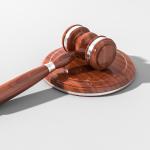Common Causes of Slip-and-Fall Accidents

Slip-fall-accidents can be debilitating, surfacing anywhere through personal mistake or the negligence of someone else. Accidents may happen and are often not the fault of the victim, and can grow into a legal case to preserve the future safety of you and others.
Property owner negligence
When you’re visiting another person’s property, it is their responsibility to ensure that there are no health-threatening hazards that may cause you to become a victim of a slip-and-fall accident due to negligence of upkeep. This can come up anywhere from convenience stores with no wet-floor signs to private properties with hazardous detritus that the owner has failed to account for or resolve. In this case, there are three conditions that are able to prove that the victim of the accident has a claim for legal defence against the person in charge:
- The hazardous condition at fault of the accident was reasonably noticeable and had been present at the property for a long time;
- The dangerous condition was created by the person in charge of the property;
- The property owner had prior knowledge of the hazard without its resolution (frozen side-walks, uneven flooring, etc.).
A slip and fall accident lawyer can then provide legal advice and set up a case against the property owner, accusing them of wrongful negligence against those visiting their property. If the property owner fights against the defense, claiming that the victim was solely or partially at fault of their accident, the state of New York follows the comparative negligence law, meaning that even if your fault is only partial, you can still receive a percentage of the recompense of damage caused against you.
Comparative fault
It may be the case that the accident is, to some degree or another, the fault of the victim. In this case, it is important to consider the facts of the case and see whether the fault was partially due to the victim’s lack of perception or negligence of their own safety, or there was probable cause that this would still not be enough to stack all responsibility on the victim.
These are a few instances you should look out for to consider whether the chances of receiving compensation still apply:
- Were you distracted and unable to witness the hazard due to your own lack of attention?
- Were you allowed to be at the site of the accident, was there probable cause for you to be allowed within the property?
- Was the danger clearly marked by signs of the hazard, warning people of its circumstance (wet floor, construction site, etc.)?
The Liberty Mutual Research Institute of Safety concluded that 15.4% of the total cost of injuries in the US were related to slip-and-fall accidents in 2014, amounting to almost US$10 billion. In a 2016 study on the issue of injury prevention, it was concluded that slip-and-fall cases are more like a pandemic than anything else, claiming the health, safety and productivity of people in jarring numbers.
These accidents can affect workers in hazardous conditions, and, without the proper safety precautions created by the people in charge, can take away work days and leave the victim entirely helpless. Slip-and-fall accidents may seem like common and benign occurrences, but, on a day-to day basis, they stack and can amount to serious bodily harm such as concussions, fractures, sprains and even severe brain and nerve damage.
More to Read:
Previous Posts:










